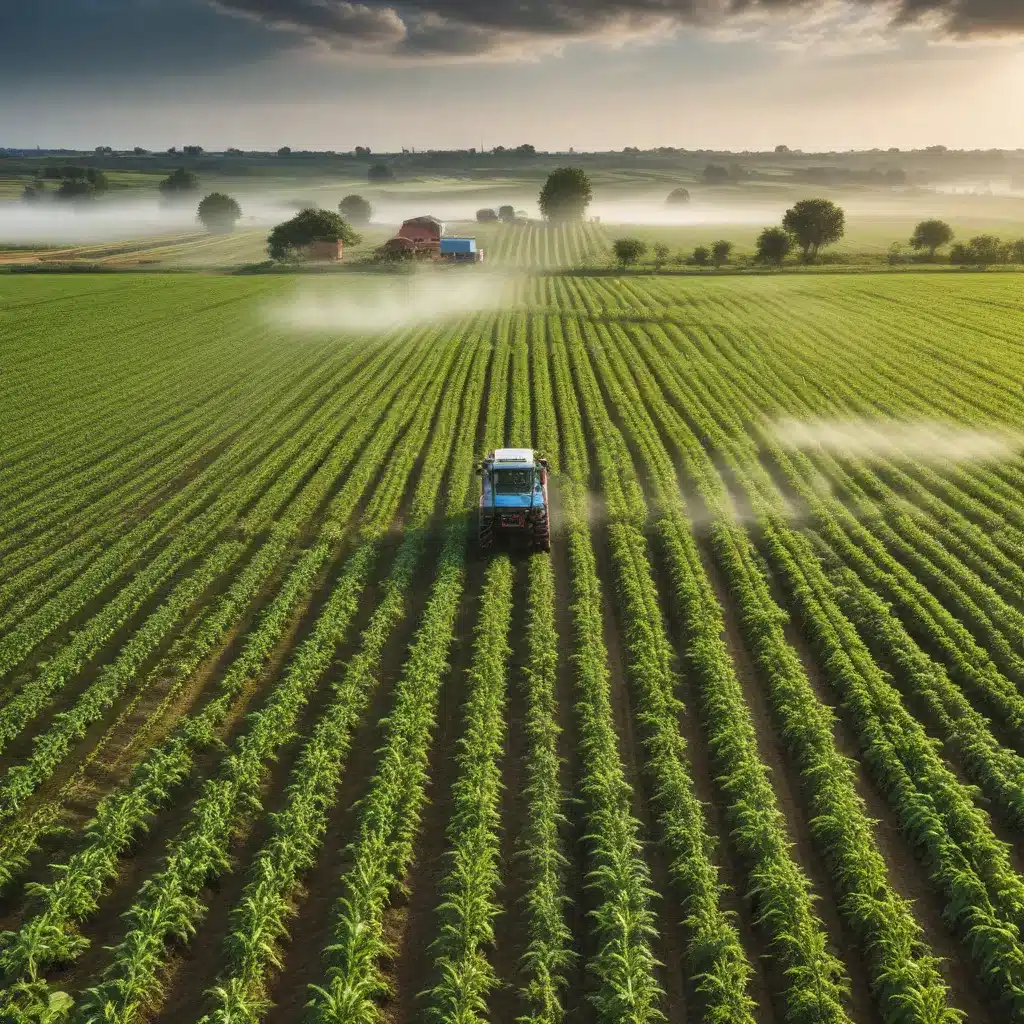
The Digital Revolution in Farming
In the verdant fields and vast farmlands, a quiet revolution is unfolding. It’s a revolution not marked by uproar but by the gentle hum of technology merging with the ancient art of farming. This revolution is powered by artificial intelligence (AI), and it’s changing the landscape of agriculture in profound and inspiring ways.
Gone are the days when farming solely depended on manual labor and traditional wisdom. Today, AI stands as a companion to the farmer, a tool as vital as the plough and the hoe. It’s transforming how farmers interact with their land and crops, promising a future of increased efficiency, sustainability, and yield.
Precision Agriculture: Powered by AI
At the forefront of this digital revolution is precision agriculture. By using AI algorithms, farmers can now analyze a wealth of data, from soil conditions to weather patterns, to make informed decisions. This data-driven approach is revolutionizing traditional farming practices, allowing for more targeted and efficient resource allocation.
Leading the charge in this realm is John Deere, a name synonymous with farming equipment. The company has integrated AI into its tractors and equipment, enabling them to plant seeds and apply fertilizers and pesticides with astonishing accuracy. This not only reduces waste but also increases efficiency, allowing farmers to optimize their operations and maximize their yields.
AI-Powered Crop Assessment and Harvesting
The benefits of AI in agriculture extend beyond precision farming. AI-powered robots have been a major boon to crop assessment and harvesting. Monitoring vast fields is a herculean task, but AI makes it manageable and precise. Companies like Plantix offer AI-powered mobile applications that allow farmers to identify crop diseases and nutrient deficiencies just by taking a photo. This technology is not only saving crops but also empowering farmers with knowledge and solutions at their fingertips.
In conjunction with crop assessment, predictive analytics through AI have been a game-changer in forecasting better harvests. One of the most significant challenges in farming is the unpredictability of nature, insect infestation, and the volatility of climate conditions. AI is changing that through complex predictive analytics. By analyzing data, AI can forecast weather patterns, predict pest invasions, and even suggest the best planting and harvesting times. Companies like The Climate Corporation are leveraging AI to provide digital agriculture solutions that help farmers optimize their efforts and anticipate challenges, maximizing resources and crop yields.
The Rise of Automated Farming
The image of robots tending to crops is no longer futuristic. Automated farming is here, and it’s making agriculture more efficient. Companies like Blue River Technology have developed AI-powered robots that can thin and weed crops, doing the work faster and more accurately than human hands.
This automation not only enhances productivity but also promotes sustainability. By optimizing resource use and reducing waste, AI is helping to create farming systems that are kinder to the planet. Initiatives like IBM’s Watson Decision Platform for Agriculture integrate AI, weather data, IoT, and blockchain to provide comprehensive solutions for sustainable farming.
The Convergence of AI and IoT
The integration of AI and the Internet of Things (IoT) is further revolutionizing the agriculture industry. IoT sensors deployed in the field collect a wealth of data, from soil moisture levels to the health of livestock. This data is then fed into AI-powered analytics platforms, enabling farmers to make more informed decisions about resource allocation, pest management, and crop optimization.
The benefits of this convergence are manifold. IoT devices are easy to install, require minimal maintenance, and can even harvest energy to ensure continuous operation. This makes them an attractive solution for farmers, especially in remote or off-grid locations. By combining the power of IoT data collection with AI-driven decision-making, the agriculture industry is poised to achieve new levels of efficiency and sustainability.
Feeding the Future: The Promise of Smart Agriculture
As we stand amidst this technological renaissance in agriculture, it’s clear that AI and IoT are not just tools; they are catalysts for a new era of farming. An era where efficiency, sustainability, and productivity go hand in hand.
Initiatives in Africa are leveraging AI to identify specific seeds to use based on local topsoil conditions and nutritional needs. Moreover, some organizations are tapping into platforms like FutureView that integrate AI, cognitive science, and the Metaverse to perform complex scenario planning. This helps people identify the optimal use of land, balancing profitability, local community impact, and environmental impact.
The hybrid intelligence combination of person and machine will yield greater crop yields using fewer resources, like topsoil and water consumption. More importantly, it’s the path to producing an abundance of food so that no one on Earth needs to go hungry. As AI and IoT continue to transform agriculture, the future holds the promise of a world fed not just in quantity, but with the quality and care that only the union of human ingenuity and technology can provide.
Embracing the Future of Agriculture
The fields are ripe, and the future is waiting. Let’s embrace this revolution in agriculture, where AI and IoT are the tools that empower farmers to feed the world. Through precision farming, automated harvesting, and predictive analytics, we can create a sustainable, efficient, and abundant agricultural landscape.
At IT Fix, we are excited to be a part of this journey, sharing the latest insights and practical tips on how AI and IoT are transforming the agriculture industry. Join us as we explore the innovations that are shaping the future of farming and discover how you can leverage these technologies to drive change in your own community.












